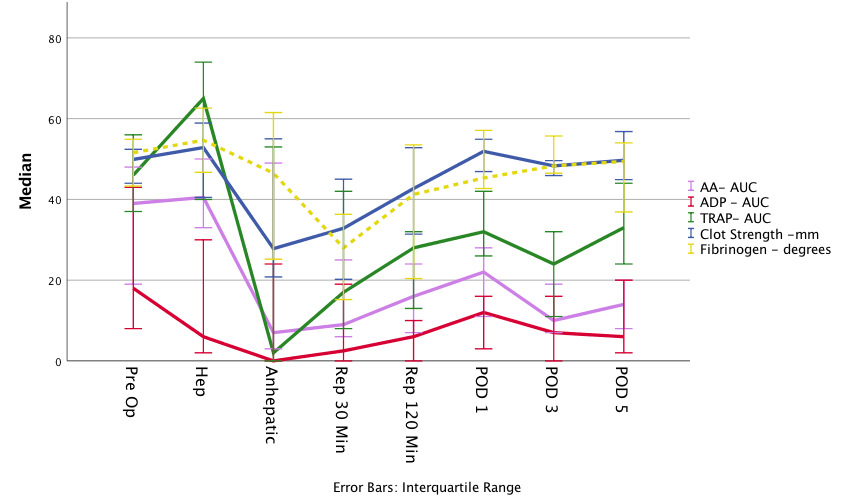T. L. Munsch1, N. J. Skill1, M. A. Maluccio1, S. Mangus1, C. A. Kubal1 1Indiana University School Of Medicine,Transplant,Indianapolis, IN, USA
Introduction:
Hepatic ischemia reperfusion injury (IRI), associated with liver transplant, is linked to acute kidney injury and an increase in morbidity and mortality. The purpose of this study was to evaluate renal impairment in response to the previously established murine 70% hepatic ischemia reperfusion model.
Methods:
In FVB mice the left hepatic artery and left portal vein was clamped to induce ischemia in the medial (ML) and left lateral lobe (LLL). Flow to the caudate (CL) and right lateral lobe RLL) was not impeded. After 30min the clamp was released. Perfusion of the LLL, RRL, spleen, and kidneys was measured using a laser Doppler flow meter before and after clamping, and before and 5 min after clamp release. 24hr post ischemia/reperfusion perfusion rates were recorded and serum and kidneys were collected. Serum ALT and creatine were quantitated using a coupled enzyme assay. Renal kidney injury molecule-1 (KIM1), a marker of renal injury, was quantitated by RT-PCR.
Results:
Perfusion rates to the LLL, spleen and kidneys were markedly reduced following clamping of left hepatic artery and left portal vein. In contrast, perfusion to the RLL was increased. Except for the spleen, perfusion rates did not normalize within 24hr of reperfusion and remained below pre ischemia levels. Serum ALT and creatinine and renal KIM-1 expression were significantly increased in IRI mice when compared to sham operated controls.
Conclusion:
The mouse 70% hepatic IRI model is appropriate for the study of transplant mediated acute kidney injury. Additional studies are required to evaluate the mechanisms connecting hepatic ischemia to renal perfusion and injury.










